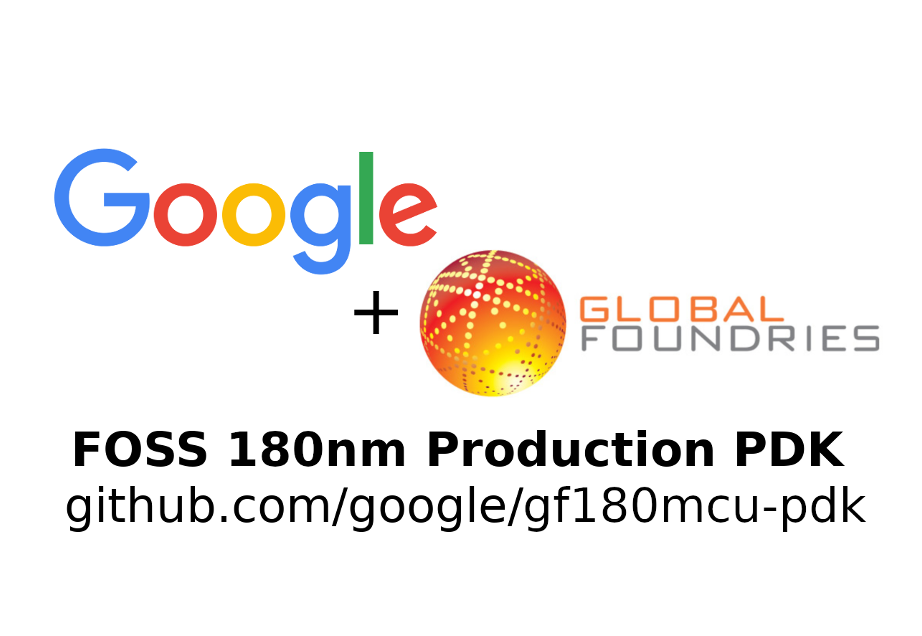Published: May 23, 2024 by Kwantae Kim
Top
Open Source Chip Design
Getting Started
-
Introducing Open-Source Circuit Design
- Copy, Paste, and Run with Google Colab
Install Open Source Tools
- Integrating Jupyter Notebook in VS Code
- Setting Up Open Source Tools with Docker
- Seamless Host-Side Control of Docker
Try It Out
Initial version: Dec 28, 2023

The Solid-State Circuit Society (SSCS) has been on a mission to take actions with their Open-Source Ecosystem (OSE) initiative. We see that the chip design community has been a bit isolated compared to the AI algorithm development side.


The entrance barrier of the chip design world is still high for newbies, as access to tools like Cadence and Synopsys is almost impossible for personal usage because of their license costs .
Of course, if you’re in a university or company, you have access, but what if not? This SSCS initiative encourages people to try designing circuits using open-source tools and open-source device libraries, namely Process Design Kit (PDK).
Here’s the thing: if you’re already a pro with Cadence or Synopsys, you’re in for a treat. It is a really nice opportunity to take advantage of applying for a grant or enjoying international networking opportunities through collaborations with Open-Source Tools!!

Regarding PDK

Okay, let’s say, you’ve got these fancy open-source tools. But to play around with your design Legos, you need the Lego pieces, which is PDK. You might ask:
Well, even getting these Legos is super-expensive!
For instance, obtaining a device library (or standard cell library), which can only be obtained through an Non-Disclousre Agreement (NDA) with a foundry like TSMC, raises questions about its feasibility.
Fortunately, thanks to a fantastic collaboration with Google, PDKs for SkyWater 130nm and GlobalFoundries 180nm have been made open-source up to this point.


So, having the library makes it possible to reach the tape-out-ready GDS. You can even find an SSC-L paper publication with a Silicon-Verified Temperature Sensor using SkyWater 130nm process!

SSCS Program
SSCS offers various activities in this regard. There are two big ones:
- PICO Open-Source Chipathon
- Code-a-Chip Travel Grant Awards
led by
| Boris Murmann | University of Hawaii |
| Mehdi Saligane | University of Michigan |
PICO Chipathon
PICO Chipathon is a program supported by SSCS, taking you from tape-out to PCB creation.
If you’re a student looking to make your CV fancier, I would like to suggest forming a team and participating into this. It’s an SSCS-supported activity and even paper-worthy.
But there’s a thing to note – it’s all about building the open-source ecosystem. You must use open-source tools and PDKs and share your chip design on GitHub.

Group a team of ~3 members (single-member team is also possible) and submit your proposal before the deadline, then you’ll be in the review process.
Selected teams meet regularly through Zoom, sometimes get some useful circuit lectures from experts, share circuit thoughts, and work together until the tape-out deadline.
Code-a-Chip
The Code-a-Chip grant applications are made with Jupyter Notebook. Jupyter Notebook is a popular Python editor.
The procedure is:
- design your circuit
- make your design runnable within the Jupyter Notebook environment
- make your design public on Github
- submit it to the grant
Prior winners were invited to:
- IEEE ISSCC in San Francisco (United States 🇺🇸)
- IEEE VLSI Symposium in annually alternating Kyoto (Japan 🇯🇵) and Hawaii (United States 🇺🇸)

Code-a-Chip winners at ISSCC 2023 (Image Source)
SSCS covers expenses like conference registration, flight, and accommodation within specified limits.
There will be a separate session for the open-source Code-a-Chip presentation, which means, you will get the chance to showcase your design at these prestigious IEEE chip design conferences!
This is actually a very nice opportunity to add an SSCS award to your CV and make your profile special.
Why do I Write This Post
Well, you might feel tricky as you encounter open-source tools for the first time.
In my case, I was merely familiar only with Cadence Virtuoso and what I knew about Linux-related terminal commands were just a few like cd, rm, ls, etc.
I knew what was Github but didn’t have a chance to use Github even until my 3rd-year Ph.D. course.
But if you want to use all of these open-source chip design tools, it is better to be familiar with Git and terminal-based commands.
This post series is supposed to help those people like me who know little about open-source tools.
Acknowledgments
Thanks to Sheng Zhou for helping me to verify the tutorial flow!